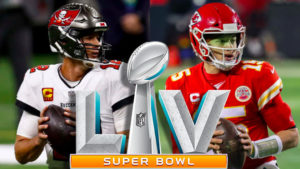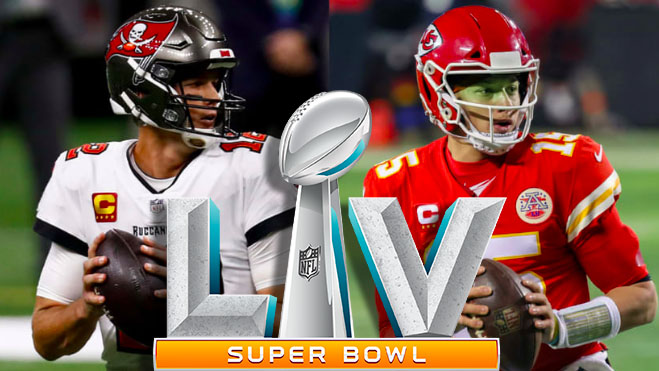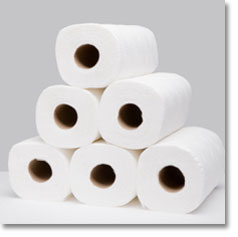Hannah Doherty

In 2014, the prominent meal-kit company, Home Chef, merged with supermarket chain, Kroger, Co., and adopted a new trademark, the “HC Home Mark.”[1] The mark, which is protected by five federal trademark registrations, features the silhouette of a fork and knife, contained within the outline of a house.[2] By 2021, Home Chef had invested significant resources and spent more than $450 million in advertising under this mark.[3]
But these efforts were hindered when Grubhub, a leading food delivery service, introduced an extremely similar mark, which also featured the outline of a fork and knife within a house.[4] This mark was designed after Grubhub’s parent organization, Just Eat Takeaway (“JET”), filed a trademark application for an almost identical mark, and was rejected by the US Patent and Trademark Office (“USPTO”).The USPTO deemed JET’s mark “confusingly similar” to Home Chef’s HC Home Mark.[5] JET then combined this rejected mark with Grubhub’s house logo, and the mark was approved,[6] despite its resemblance to Home Chef’s mark.
Home Chef sent a cease-and-desist letter to Grubhub, demanding the company discontinue their use of the similar mark.[7] Instead, Grubhub and JET responded by collectively filing a complaint against Home Chef and Kroger, seeking a declaratory judgment for non-infringement, which would allow them to continue using the mark.[8]
In an action for trademark infringement, the plaintiff must establish that their mark had priority over the infringing mark and demonstrate that the similarity of the marks is likely to cause confusion for consumers.[9] In evaluating whether there is a likelihood of confusion between the two marks, the court considers “whether consumers who might use either product [or service] would likely attribute them to a single source.”[10] In the Seventh Circuit, the court applies a multifactor test consisting of the following seven factors, none of which is dispositive: “(1) similarity of the marks in appearance and suggestion; (2) similarity of the products [or services]; (3) the area and manner of concurrent use; (4) the degree of care likely to be exercised by consumers; (5) the strength of the senior user’s mark; (6) the existence of actual confusion; and (7) the intent of the defendant to ‘palm off’ its product as that of another.”[11]
Based on this analysis, the Magistrate Judge recommended granting a preliminary injunction in favor of Home Chef, but the U.S. District Court for the Northern District of Illinois refused to enjoin Grubhub’s use of the mark, finding Home Chef did not sufficiently demonstrate a likelihood of consumer confusion.[12]
Home Chef appealed to the Seventh Circuit U.S. Court of Appeals, which reviewed the District Court’s ruling under a clearly erroneous standard.[13] The panel found no clear error in the District Court’s likelihood-of-confusion analysis, and upheld the denial of the injunction.[14]
But the standard of appellate review applied in trademark infringement claims differs significantly across circuits, because jurisdictions are not consistent in whether they regard the likelihood-of-confusion analysis as a legal conclusion or a factual finding.[15]
In circuits where the likelihood-of-confusion analysis is deemed a question of law, the appellate court will review the district court’s finding de novo, which is the least deferential standard, as no deference is given to the trial court’s assessment.[16] This is the approach taken in the Second Circuit and the Federal Circuit.[17]
Oppositely, in circuits where the likelihood-of-confusion analysis is considered a question of fact, a clearly erroneous standard is applied on appeal.[18] This standard is less deferential, therefore the likelihood of success on appeal is significantly lower.[19] Under this standard, even if the reviewing court believes the outcome should have been different, they will not overturn the lower court’s ruling unless the circumstances are egregious and the court is “left with the definite and firm conviction that a mistake has been committed.”[20] This is the standard applied in the Fourth, Seventh, and Ninth Circuits, and was used in the case between Grubhub and Home Chef.[21]
Further complicating the circuit split, the First, Third, Fifth, Eight, Tenth, and Eleventh Circuits treat trademark infringement claims as mixed questions of law and fact and apply a clearly erroneous standard to the factual issues, while also analyzing the legal principles de novo.[22] And the sixth circuit reviews each of the seven factors under the clearly erroneous standard, but reviews the ultimate balancing of the factors and likelihood-of-confusion decision de novo.[23]
Furthermore, the circuits differ in how each of the likelihood-of-confusion factors are weighed in the balancing test; some courts emphasize certain factors more than others, some analyze slightly different factors, and some courts skip factors altogether.[24]
For example, the Seventh Circuit places more weight on the similarity of the marks, the defendant’s intent, and actual confusion factors.[25] In this case the District Court found all three of these factors weighed against a likelihood of confusion, and thus, in favor of Grubhub.[26] It was undisputed that the remaining four factors all weighed in favor of Home Chef, and on appeal, Home Chef argues that “all seven factors are ‘interconnected,’” and thus “the district court clearly erred by focusing only on the factors in dispute without addressing the undisputed factors,” three of which weighed in favor of Home Chef.[27] In courts where the factors are weighed differently, the outcome could have been different. These distinctions between circuits result in inconsistent outcomes and cause unpredictability.
Home Chef highlights the fact that “three sequential decisions analyzed differing combinations of factors and evidence, applying different legal standards,”[28] and claims that the court’s failure to consider all the relevant likelihood-of-confusion factors results in “arbitrary and capricious findings,” as courts can ignore relevant factors, “enabling subjective decision-making.”[29]
On January 9, 2024, Home Chef petitioned the U.S. Supreme Court for a writ of certiorari, requesting that the court resolve the Circuit Split regarding the proper likelihood-of-confusion analysis in trademark infringement actions.[30] Specifically, Home Chef asked the court whether the likelihood-of-confusion analysis is a factual finding, and thus reviewable under a clearly erroneous standard, or a legal conclusion, reviewable de novo.[31] Further, Home Chef asked the court to decide whether the court must explain its analysis for all of the likelihood-of-confusion factors in the balancing test. An Amicus Curiae brief has been filed, urging the Supreme Court to adopt a uniform national standard for trademark infringement analyses.[32]
Home Chef contends that the circuit split “weakens the trademarks and the benefits afforded by the registration system.”[33] Not only does a flawed trademark system harm consumers, who might experience difficulties discerning the origin of products and services, but it also harms businesses that devote significant resources to building brand recognition and consumer goodwill under their protected trademark.
[1] Amici Tell High Court Jury Should Decide Likelihood of Confusion, 25 Mealey’s Litig. Rep. Trademarks 7 (Mar. 2024) [hereinafter “Amici”], https://plus.lexis.com/api/permalink/0e75dbd6-ad72-49c0-b95a-6a9378ad9c4a/?context=1530671.
[2] Tessa Kroll, Grubhub Relishes Victory Against Trademark Preliminary Injunction, The Nat’l L. Rev. (Sept., 28, 2023), https://www.natlawreview.com/article/grubhub-relishes-victory-against-trademark-preliminary-injunction.
[3] Id.
[4] Amici, supra note 1.
[5] Id.
[6] Id.
[7] Id.
[8] Id.
[9] Grubhub Inc. v. Relish Labs LLC, 80 F. 4th 835, 844 (7th Cir. Sept. 12, 2023).
[10] Id.
[11] Id. at 847.
[12] Id. at 841.
[13] Id. at 844.
[14] Grubhub Inc. v. Relish Labs LLC, 80 F. 4th 835, 858 (7th Cir. Sept. 12, 2023).
[15] Eileen McDermott, Kroger Asks SCOTUS to Fix Circuit Inconsistencies in Likelihood of Confusion Analysis IP Watchdog (Jan. 11, 2024, 5:45 PM), https://ipwatchdog.com/2024/01/11/kroger-asks-scotus-fix-circuit-inconsistencies-likelihood-confusion-analysis/id=171890/.
[16] Identifying and Understanding Standards of Review, Geo. U. L. Ctr. (2019), https://www.law.georgetown.edu/wp-content/uploads/2019/09/Identifying-and-Understanding-Standards-of-Review.pdf.
[17] McDermott, supra note 15.
[18] Identifying and Understanding Standards of Review, supra note 16.
[19] Id.
[20] McDermott, supra note 15.
[21] Id.
[22] Id.
[23] Id.
[24] Home Chef Asks High Court to Standardize Trademark Likelihood-Of-Confusion Test, 20 Mealey’s Litig. Rep. Trademarks 13 (Feb. 5, 2024) [hereinafter “Home Chef”], https://plus.lexis.com/api/permalink/bdc91b30-86bd-4340-b02a-b89390ad64df/?context=1530671.
[25] Grubhub Inc. v. Relish Labs LLC, 80 F. 4th 835, 847 (7th Cir. Sept. 12, 2023).
[26] Id. at 848–857.
[27] Id. at 858.
[28] McDermott, supra note 15.
[29] Home Chef, supra note 24.
[30] Amici, supra note 1.
[31] Id.
[32] Id.
[33] Home Chef, supra note 24.








